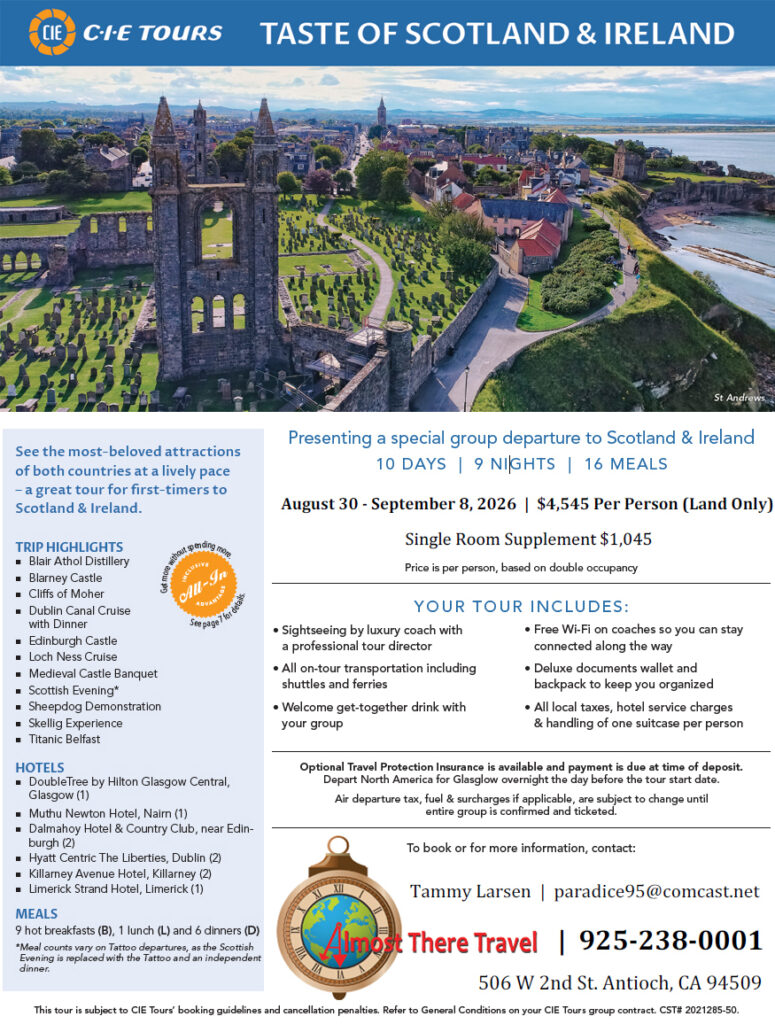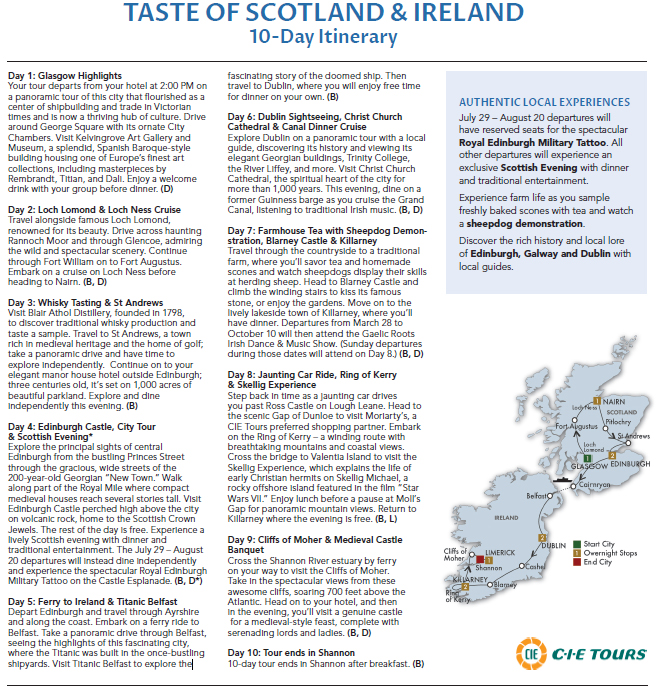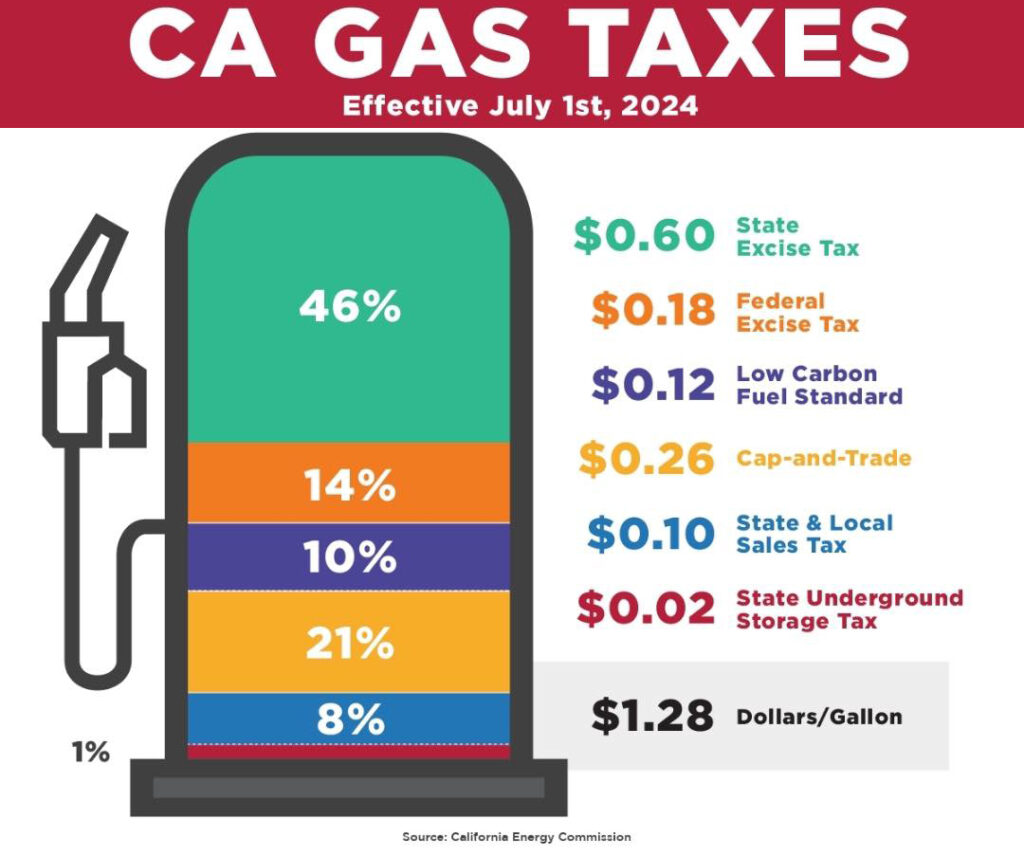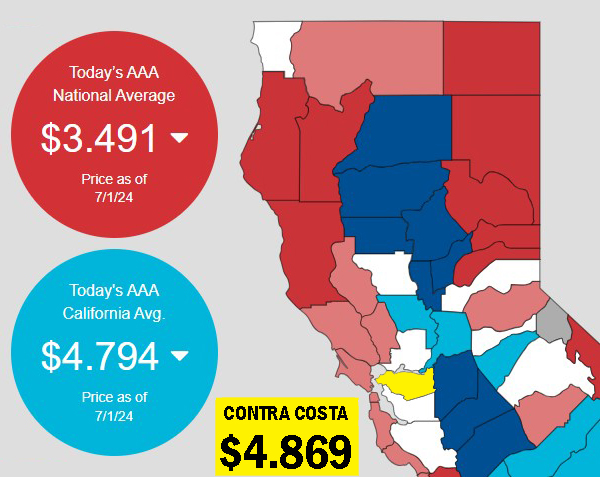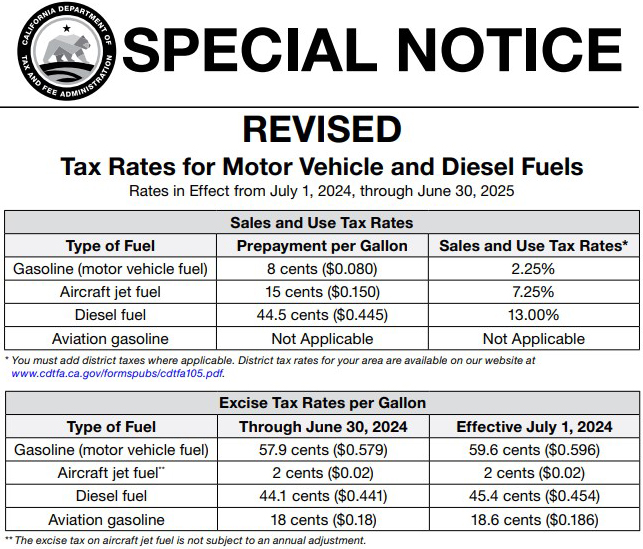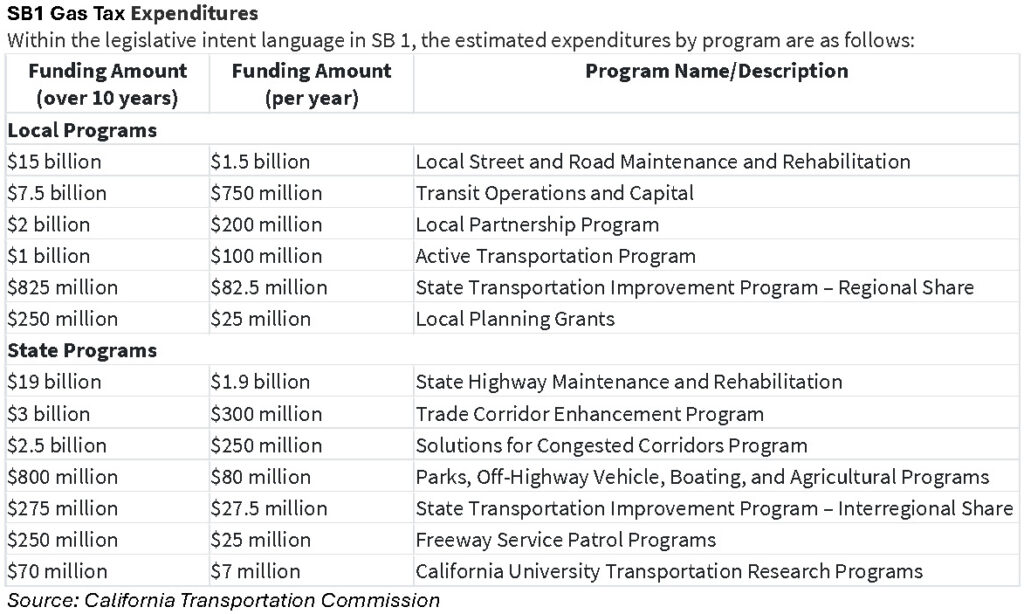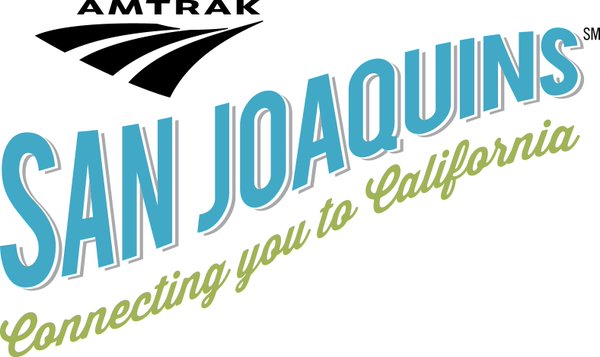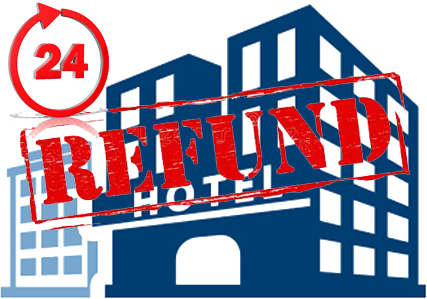CHP distributes over $35 million to fight impaired driving
Antioch, Danville, Pinole, Pleasant Hill, Richmond, San Ramon PD’s, Contra Costa Sheriff’s Dep’t among 148 Cannabis Tax Fund Grant Program recipients
CCC Sheriff Forensic Services Division will use funds for toxicology crime lab
By Tami Grimes, CHP Public Information Officer
SACRAMENTO – The California Highway Patrol (CHP) today announced more than $35 million in grant funding to 148 California law enforcement agencies, crime laboratories, local government agencies and nonprofit organizations to help address the dangers of driving under the influence of alcohol and/or drugs.
“As the legal cannabis market continues to grow, so do the state’s efforts to ensure Californians are recreating responsibly. By supporting the organizations that enforce and amplify our laws on the ground, we can keep everyone safer,” said Governor Gavin Newsom.
The grants from Proposition 64, the Control, Regulate and Tax Adult Use of Marijuana Act, assigned the CHP the responsibility of administering grants for education, prevention and enforcement programs aimed at helping communities tackle impaired driving. Additionally, funds are available for crime laboratories that conduct forensic toxicology testing. The funding for these grants comes from a tax on the sale of cannabis and cannabis products in California.
“This funding represents a major step forward in our ongoing mission to save lives and prevent impaired driving,” said CHP Commissioner Sean Duryee. “With over $35 million going to nearly 150 public safety partners across the state, we’re expanding our reach like never before. These resources will help those on the frontlines keep California’s roads safer for everyone.”
These funds will go towards a variety of activities. One hundred twenty-six recipients of law enforcement grants will use the funding to combat impaired driving in their communities, including Antioch, Danville, Pinole, Pleasant Hill, Richmond and San Ramon Police Departments. The funds will also support drug recognition evaluator training to improve the identification of drug-impaired drivers, as well as public outreach campaigns, including educational presentations and community events.
Eleven recipients of education grants will use the funds to inform local communities about impaired driving laws while highlighting the dangers of driving under the influence of alcohol and/or drugs.
Seven recipients of two-year toxicology crime laboratory grants, including the Contra Costa County Sheriff’s Department Forensic Services Division, will use the funds to eliminate backlogs in analyzing forensic science evidence and to purchase or upgrade laboratory equipment to enhance testing capabilities.
Four recipients of two-year medical examiner’s and coroner’s office grants will use the funds to improve and advance data collection in cases involving driving under the influence of alcohol and/or drugs.
With the passage of Proposition 64, the Control, Regulate, and Tax Adult Use of Marijuana Act (AUMA), California voters mandated the state set aside funding for the California Highway Patrol (CHP) to award grants to local governments and qualified nonprofit organizations, as described in Revenue and Taxation Code Section 34019(f)(3)(B).
The Cannabis Tax Fund Grant Program marks an important step toward reducing impaired driving crashes, increasing public awareness surrounding the dangers of impaired driving, and making California’s roadways a safer place to travel.
The application process for future grant funding is expected to reopen in early 2026. More information is available on the CHP website at CHP’s Cannabis Tax Fund Grant Program.
The mission of the CHP is to provide the highest level of Safety, Service, and Security.
Allen D. Payton contributed to this report.
Seat belts save lives: CHP ramps up roadway patrols ahead of Memorial Day Weekend
Holiday Enforcement Period Friday, May 23 at 6:01 PM to Monday, May 26 at 11:59 PM
SACRAMENTO — As Memorial Day weekend marks the unofficial beginning of summer, the California Highway Patrol (CHP) urges drivers and passengers to prioritize safety by buckling up before each trip.
The CHP will begin its annual statewide Memorial Day Holiday Enforcement Period (HEP) on Friday, May 23, at 6:01 p.m. and continue through Monday, May 26, at 11:59 p.m. To help maintain safety on California’s roadways, CHP officers will be vigilant for impaired and reckless drivers and motorists who fail to buckle up.
“Our top priority is keeping the public safe, not just during the holidays but daily,” said CHP Commissioner Sean Duryee. “Buckling up is one of the easiest and most effective ways to protect yourself and your passengers in a crash. Our officers will be out in force to help everyone arrive at their destination safely.”
In addition to CHP officers driving traditional black-and-white patrol vehicles, motorists are reminded that they may encounter the CHP’s new generation of low-profile Specially Marked Patrol Vehicles on the roadway. These fully marked patrol vehicles blend into traffic just enough to observe the most reckless and dangerous driving behaviors without immediate detection.
Last year, 42 people lost their lives in crashes across California during Memorial Day weekend. Tragically, nearly half of all vehicle occupants killed in a crash within CHP jurisdiction were not wearing seatbelts. CHP officers also made more than 1,100 arrests for driving under the influence of alcohol or drugs.
California law mandates that all drivers and passengers aged eight and older must wear seatbelts. Children under eight need to be properly secured in an appropriate child passenger safety seat or booster seat situated in the back seat of the vehicle. Children under two must also ride in a rear-facing car seat unless they weigh more than 40 pounds or are taller than 40 inches.
This year, the CHP’s holiday enforcement effort coincides with the National Highway Traffic Safety Administration’s (NHTSA) designation of May 19 – June 1 as the national “Click it or Ticket” mobilization campaign. Throughout this awareness initiative, CHP personnel will concentrate their enforcement efforts on seat belt and child safety seat violations.
As always, the CHP urges everyone to make smart choices behind the wheel: Buckle up. Drive sober. Stay alert. If you plan to drink or use drugs, arrange for a safe ride home before heading out. Your safety and the safety of others depend on it.
Let’s work together to make this Memorial Day weekend safe for all Californians.
The mission of the CHP is to provide the highest level of Safety, Service, and Security.
Parks California awards $1 million in Route to Parks grants to 31 organizations
Now in its fifth year, program expands efforts to make it easy for visitors to get to state parks
 SACRAMENTO – Parks California and California State Parks announced this week grants to 31 organizations throughout California, totaling more than $1 million to improve access to state parks and create memorable nature experiences. Through Parks California’s Route to Parks grant program, these funds will help more than 7,700 people create lasting memories at state parks in 2025.
SACRAMENTO – Parks California and California State Parks announced this week grants to 31 organizations throughout California, totaling more than $1 million to improve access to state parks and create memorable nature experiences. Through Parks California’s Route to Parks grant program, these funds will help more than 7,700 people create lasting memories at state parks in 2025.
 The 2025 grantees include programs from across the state, focused on providing experiences in parks through activities such as camping, backpacking by bike and recurring, single-day programs. Three projects with California Native American tribes: Fernandeño Tataviam Band of Mission Indians, Jamul Indian Village and the Mishewal Wappo will help increase access to their ancestral lands and cultivate collaboration and partnerships with park staff.
The 2025 grantees include programs from across the state, focused on providing experiences in parks through activities such as camping, backpacking by bike and recurring, single-day programs. Three projects with California Native American tribes: Fernandeño Tataviam Band of Mission Indians, Jamul Indian Village and the Mishewal Wappo will help increase access to their ancestral lands and cultivate collaboration and partnerships with park staff.
For the 2025 grant cycle, we sought proposals that address the following criteria:
• Primarily provide transportation to/from California State Parks and beaches;
• Offer valuable recreational, environmental, cultural or historical learning experiences;
• Reach underrepresented communities who may face challenges getting to or enjoying parks, and/or lack opportunities to create meaningful connections to nature;
• Address parts of the state with the greatest transportation needs.
“The Route to Parks program highlights the power of partnerships in complementing California State Park’s efforts, bridging gaps to ensure memorable outdoor access for all,” said California State Parks Director Armando Quintero. “Partnering with Parks California expands our efforts in creating more opportunities for Californians to make lasting connections with the wonder of their state parks.”
Parks California’s Route to Parks grants program was launched in 2020 to reduce transportation barriers and help ensure that historically marginalized communities can visit and enjoy California’s world-class state parks. The program is made possible through a joint agreement between California State Parks and Parks California, and investments from private donors, including the PG&E Corporation Foundation and BMO.
“California’s state parks belong to all of us, yet too many communities face barriers to enjoying these incredible spaces,” said Parks California President and CEO Kindley Walsh Lawlor. “Through Route to Parks, we’re working alongside our partners to break down those barriers — ensuring that transportation, cost or other obstacles don’t stand in the way of people experiencing the joy, health benefits and sense of belonging that parks provide. My sincere appreciation to this year’s grantees who are leading the way in connecting communities to nature; we are honored to support their work.”
Grant awards average $37,675 and will fund transportation, logistics and park activities. Grantee recipients represent the diversity and reach of California’s state park system.
Below are three 2025 grantee profiles:

Land Together participants enjoy fishing on their camping outing funded through the Route to Parks program. Photo from Parks California.
• Land Together (formerly Insight Garden Program)—Received $30,000 grant. “The profound appreciation I have for nature stems from being completely removed from it during my 25 years of incarceration. My journey back to nature—and ultimately to freedom—was made possible through Land Together‘s in-prison program,” said Sr. Reentry Program Manager Jamala Taylor. “I am deeply grateful for Parks California’s generous support, which has allowed us to expand this transformative work to our growing reentry community. Through our ‘Reentry Reconnect: Nature for New Beginnings’ project, we are providing healing experiences in California’s state parks for individuals reentering society after incarceration. None of this would be possible without the invaluable partnership and shared vision of Parks California.”
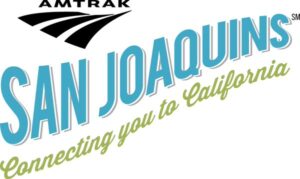 • San Joaquin Joint Powers Authority – Visit Allensworth by Amtrak San Joaquins – Discover Your California Heritage – Allensworth, founded in 1908, is the first town in California to be founded, financed, and governed solely by African Americans. San Joaquin Joint Powers Authority’s program will increase access and awareness of Col. Allensworth State Park for African American individuals and families in the Bay Area and Northern California and students in the Fresno and Bakersfield Unified School Districts. The program will provide free tickets and meal vouchers for the 2025 October Rededication Festival, as well as designated field trip days for Fresno Unified and Bakersfield City School District students. This program cultivates a tradition that is relevant, historical, and exciting and has the possibility of increasing the overall percentage of African Americans who go to California State Parks. and celebrate annual events such as October Rededication Festival.
• San Joaquin Joint Powers Authority – Visit Allensworth by Amtrak San Joaquins – Discover Your California Heritage – Allensworth, founded in 1908, is the first town in California to be founded, financed, and governed solely by African Americans. San Joaquin Joint Powers Authority’s program will increase access and awareness of Col. Allensworth State Park for African American individuals and families in the Bay Area and Northern California and students in the Fresno and Bakersfield Unified School Districts. The program will provide free tickets and meal vouchers for the 2025 October Rededication Festival, as well as designated field trip days for Fresno Unified and Bakersfield City School District students. This program cultivates a tradition that is relevant, historical, and exciting and has the possibility of increasing the overall percentage of African Americans who go to California State Parks. and celebrate annual events such as October Rededication Festival.
 • Jamul Indian Village—Received $80,000 grant. “The Jamul Indian Village of California of the Kumeyaay Nation is excited to have been awarded this grant from Parks California,” said Tribal Historic Preservation Officer and Cultural Resources Manager Lisa K. Cumper. “With this grant, we are eager to take tribal youth and their families to various state park locations along the coast of San Diego. We will be able to share and teach the rich history of our ancestors to our youth. This important cultural knowledge needs to be passed down, and this grant is allowing us to accomplish this goal. We are also grateful to continue to grow our relationship with State Parks staff members.”
• Jamul Indian Village—Received $80,000 grant. “The Jamul Indian Village of California of the Kumeyaay Nation is excited to have been awarded this grant from Parks California,” said Tribal Historic Preservation Officer and Cultural Resources Manager Lisa K. Cumper. “With this grant, we are eager to take tribal youth and their families to various state park locations along the coast of San Diego. We will be able to share and teach the rich history of our ancestors to our youth. This important cultural knowledge needs to be passed down, and this grant is allowing us to accomplish this goal. We are also grateful to continue to grow our relationship with State Parks staff members.”
A complete list of grant recipients is available online.
“The Route to Parks program embodies California’s commitment to making valuable recreational, environmental, cultural or historical learning experiences available to all Californians,” said California Natural Resources Agency Deputy Secretary for Access Gloria Sandoval. “Partners like Parks California are helping reduce barriers and form partnerships. We are especially excited to greet first-time visitors so that they can enjoy all that our beautiful state has to offer.”
State Parks’ Waterway Connections Initiative funding and private donor investments allowed Parks California to engage organizations that could connect participants to water-related outdoor experiences. Six projects feature programs designed to follow watersheds from headwater to groundwater, offering an unparalleled educational experience to understanding California’s unique watersheds.
Route to Parks has partnered with more than 85 community organizations to serve more than 16,000 people in its first four years. The program enables grantees to design activities that best meet their community’s needs and deliver experiences most suited to participants’ backgrounds, experiences and interests. The program is aligned with the Outdoor Access for All initiative championed by Governor Gavin Newsom and First Partner Jennifer Siebel Newsom and the Natural Resources Agency’s Outdoors for All initiative for greater access to all Californians with a priority to expand access in underserved communities.
The California Department of Parks and Recreation, popularly known as State Parks, and the programs supported by its Office of Historic Preservation and divisions of Boating and Waterways and Off-Highway Motor Vehicle Recreation provides for the health, inspiration and education of the people of California by helping to preserve the state’s extraordinary biological diversity, protecting its most valued natural and cultural resources, and creating opportunities for high-quality outdoor recreation. Learn more at parks.ca.gov.
About Parks California
Parks California is the official public-private nonprofit partner to California State Parks. Working statewide, it’s uniquely positioned to innovate and work hand-in-hand with communities and experts to bring resources together, ensuring that everyone can experience healthy and thriving parks for generations to come. Parks California launched in 2019 and since has partnered with more than 100 nonprofit and tribal groups to help more than 28,000 people experience one of California’s 280 state parks — many for the first time ever — in the hopes of starting a lifelong love of nature.
Allen D. Payton contributed to this report.
Sand Creek Road Extension in Brentwood now open

Eastbound and westbound views of the now open Sand Creek Road Extension including the bridge over the creek. Herald file photos.
Connects Hwy 4 to Heidorn Ranch Road and Hillcrest Avenue in Antioch
By Allen D. Payton
The City of Brentwood announced on Monday, “The Sand Creek Road Extension is NOW OPEN! We’re thrilled to bring this new roadway to the community and hope it enhances your travels. Please drive safely and enjoy the new route!”
About the delay in the road’s opening two weeks after the ribbon cutting, Assistant City Manager Darin Gale said, “The extension is a unique project because it starts at an intersection that’s controlled by Caltrans and ends at an intersection that’s controlled by Antioch.”
“There were still some items that needed to be completed before we could open the road,” he shared, reiterating what City Manager Tim Ogden said during the ribbon cutting ceremony on Jan. 28. (See related article)
“We appreciate the partnership with those two agencies in getting the road open as quickly as possible” Gale added.
“Part of the intersection built by the developer in Antioch had not yet been approved by the City of Antioch,” he explained as one of the reasons for the delay.
Gale was asked about the timing of the opening and if it had anything to do with the new Costco opening nearby.
He responded, “The City of Brentwood was moving forward with the Sand Creek Road anyway. However, the road does provide a connection to Costco. While it was coincidental to the timing of the opening of Costco, it helped us with attracting the store to Brentwood.”
“We look forward to Sand Creek Road serving the Brentwood Innovation Center (located to the north) and bringing jobs to the residents of East County,” Gale stated.
The new section of the road now connects to the Antioch section at Heidorn Ranch Road, then to Hillcrest Avenue and west to the road that runs north adjacent to Dozier Libbey Medical High School in Antioch.
Gale also reiterated what Antioch Mayor Ron Bernal said at the ribbon cutting, as previously reported. He said, “Richland Communities over to the west of us, they’re going to be starting this year, I’m told, on their subdivision that’s going to build that final link between Sand Creek Road, where it terminates right now, and Deer Valley Road. So, that’s going to be able to get residents and folks over to Kaiser, which is important, getting people off of Deer Valley Road.”
Sand Creek Road will eventually connect to Dallas Ranch Road in Antioch, on the west side of Deer Valley Road and run through The Ranch 1,177-new home subdivision developed by Richland Communities and approved by the Antioch City Council in July 2020.
CHP to hold statewide Maximum Enforcement Period for Christmas
Tuesday & Wednesday, Dec. 24 & 25
SACRAMENTO – As families prepare to celebrate the holidays, the California Highway Patrol (CHP) reminds everyone to prioritize safety on the road. To keep travelers safe throughout the busy holiday season, the CHP is initiating the first of two statewide Maximum Enforcement Periods (MEP) this month to reduce traffic incidents by targeting unsafe driving behaviors and assisting motorists.
The CHP’s Christmas MEP begins at 6:01 p.m. on Tuesday, December 24, and continues until 11:59 p.m. on Wednesday, December 25. During this period, the CHP will increase patrols throughout the state to deter dangerous driving behaviors, including impaired driving, speeding, distracted driving and seat belt violations. The CHP also encourages the public to report unsafe drivers by calling 9-1-1.
“This time of year is about celebrating with family and friends, but it’s also a time when traffic incidents increase due to poor driving decisions,” said CHP Commissioner Sean Duryee. “Each of us has a role in making California’s roads safer. Let’s work together to keep this holiday season free of tragedy.”
Last year, during the 78-hour Christmas MEP, 20 people lost their lives in crashes within CHP jurisdiction. In addition, CHP officers made over 900 arrests for driving under the influence.
Let’s make safety our top priority on the road! Buckle up, drive responsibly, and if you’re celebrating, always plan for a sober ride. Your thoughtful choices can help prevent crashes and keep California’s roads safe for everyone. Celebrate wisely and drive with care!
The mission of the CHP is to provide the highest level of Safety, Service, and Security.
California State Parks invites you to explore the magic of Hearst Castle® After Dark with new evening tour series

Galatea on a Dolphin, a 19th century Italian marble sculpture, illuminated in the Lily Pond on the Main Terrace of Hearst Castle – one of the many works that can be viewed as part of the ‘Art Under the Moonlight’ tour. Photo from California State Parks
‘Art Under the Moonlight’ tours will allow guests to explore William Randolph Hearst’s famed art collection like never before
By California Department of Parks and Recreation, Divisions of Boating and Waterways, Historic Preservation and Off-Highway Motor Vehicle Recreation
SAN SIMEON, Calif.— California State Parks is excited to announce a new limited series of evening tours at the iconic Hearst Castle® this fall. The “Art Under the Moonlight” tours will offer guests a unique opportunity to explore William Randolph Hearst’s world-renowned art collection like never before – under the enchanting glow of the moon. These guided tours will be available on select Fridays and Saturdays from Oct. 4 through Nov. 16. Due to the limited availability, reservations are highly recommended.
WHAT: ‘Art Under the Moonlight’ tours
WHEN: Select Fridays and Saturdays from Oct. 4 – Nov. 16, 2024
WHERE: Hearst San Simeon State Historical Monument (Hearst Castle®)
COST: $50 for guests over 12 years old, $25 for children ages 5-12, no cost for children under 5.
ACCESSIBILITY: The tour will involve navigating 160 stairs and will take moderate effort. An ADA-accessible version of the tour that involves no stairs and can accommodate up to four people per tour is also available.
HOW TO JOIN: Visit HearstCastle.org or ReserveCalifornia.com to make your reservation. The tour lasts 100 minutes.
The new tour offers a rare chance to view illuminated outdoor works of art while learning about their significance through time and enjoying their beauty as one of Hearst’s honored guests would have done in the 1930s. Inside the historic castle, guests will get an intimate look at the art collection that the influential media mogul amassed during his time there.
“This is an incredible opportunity to be under the moonlight on the same path that Mr. Hearst and his guests strolled while smelling the fragrant blooms and hearing the calming sound of the hilltop fountains,” said San Luis Obispo Coast District Superintendent Dan Falat. “The evenings are magical here, and this one-of-a-kind art collection is shown off in the best lighting.”
About Hearst Castle®
La Cuesta Encantada, “The Enchanted Hill” high above the ocean at San Simeon, was the creation of two extraordinary individuals, William Randolph Hearst and architect Julia Morgan. Their collaboration, which began in 1919 and continued for 28 years, transformed an informal hilltop campsite into the world-famous Hearst Castle® – an estate that comprises the magnificent 115-room main house plus three sumptuous guesthouses, pools, and 127 acres of terraced gardens, fountains, and paths. The main house, “Casa Grande” and the three guesthouses, “Casa del Monte,” “Casa del Sol,” and “Casa del Mar” are home to Hearst’s extraordinary art collection and have hosted many influential guests, including President Calvin Coolidge, Winston Churchill, George Bernard Shaw, Hedda Hopper, Joan Crawford, Charlie Chaplin, and a diverse array of luminaries from the sports, show business, and publishing industries.
The California Department of Parks and Recreation, popularly known as State Parks, and the programs supported by its Office of Historic Preservation and divisions of Boating and Waterways and Off-Highway Motor Vehicle Recreation provide for the health, inspiration and education of the people of California by helping to preserve the state’s extraordinary biological diversity, protecting its most valued natural and cultural resources, and creating opportunities for high-quality outdoor recreation. Learn more at parks.ca.gov.
Why does California’s gas tax keep increasing?
State’s excise tax on gasoline increased July 1 from 57.9 to 59.6 cents per gallon and from 44.1 to 45.4 cents per gallon for diesel fuel.
No end in the law to annual increases based on state CPI
By Allen D. Payton
If you’re not already aware, the State of California gas tax increased today, July 1, 2024 according to the announcement in May by the Department of Tax and Fee Assessment (CDTFA). According to that notice as reported by the California Taxpayers Association, the state’s excise tax* on gasoline increased today “from 57.9 cents per gallon to 59.6 cents per gallon and from 44.1 cents per gallon to 45.4 cents per gallon for diesel fuel.”
According to the California Transportation Commission, “the Legislature passed and the Governor signed SB 1 (Beall, 2017)…increasing transportation funding and instituting much-needed reforms. SB 1 provides the first significant, stable, and on-going increase in state transportation funding in more than two decades.”
Contra Costa’s representatives at that time split on the bill, with then-Assemblyman Jim Frazier, who was chairman of the Assembly Transportation Committee, and Assemblyman Tim Grayson voting in favor, and State Senator Steve Glazer voting against.
As of Monday, according to the American Automobile Association (AAA), which updates prices daily, drivers in Contra Costa County are paying an average of $4.869 per gallon of regular unleaded gas, while today’s Bay Area average is $4.943, California’s average is $4.794 and the national average is $3.491 per gallon.
Taxes & Fees in the Price for a Gallon of Gas
According to data from the California Energy Commission, drivers are now paying 90 cents in taxes per gallon of gas:
- $0.596 on state excise tax
- $0.184 on the federal excise tax
- $0.10 cents on more state and local sales taxes
- $0.02 for a state underground storage tank fee
Plus, $0.51 for state environmental programs fee for a total of $1.41 in taxes and fees per gallon of gas.
But why does the state gas tax keep increasing each year? It’s due to the passage of a bill in 2017, not a vote of the people, as some folks misremember. According to the Metropolitan Transportation Commission (MTC), State Senate Bill 1 (SB1) entitled the Road Repair and Accountability Act of 2017, “was passed by a two-thirds majority in the California Legislature and signed into law by Governor Jerry Brown in 2017. As the largest transportation investment in California history, SB 1 is expected to raise $52.4 billion for transportation investments statewide over the next decade.” It marked “the first increase in the state excise tax on gasoline since 1994.”
It requires the CDTFA to annually adjust the rate by the increase in the California Consumer Price Index (CPI) which is as calculated by the Department of Finance (CDFI). According to the CADFI, the CPI “measures price changes in goods and services purchased by urban consumers. The all urban consumer (CPI-U) represents the spending patterns of the majority of the population which includes professionals, the self-employed, the poor, the unemployed, and retired people, as well as urban wage earners and clerical workers (CPI-W). The U.S. Bureau of Labor Statistics (BLS) compiles and publishes the CPI for the Los Angeles area monthly, the Riverside area bimonthly, San Diego County bimonthly, the San Francisco area bimonthly, and the nation each month. A California CPI is calculated…as a population-weighted average of the BLS-published local area CPIs. The California CPI formula was developed by the California Department of Industrial Relations (CADIR).”
According to the CDIR, the CPI “Is a measure of the average change over time in the prices paid by urban consumers for a fixed market basket of goods and services. The CPI provides a way to compare what this market basket of goods and services costs this month with what the same market basket cost, say, a month or year ago.” This year, the California CIP was determined to be 3.3% in February and 3.8% in April.
History of Recent CA Gas Tax Increases
In addition, according to details provided by the CDTFA, “*Effective July 1, 2010, under the Fuel Tax Swap Law, purchases and sales of gasoline are exempt from the state portion of the sales and use tax rate (then 6 percent), and a corresponding increase in the excise tax rate on that gasoline was imposed.” Then, “Effective November 1, 2017, Senate Bill 1 imposed an additional $0.12-per-gallon gasoline tax.” Finally, “Effective July 1, 2020, Senate Bill 1…requires CDTFA to annually adjust the rate by the increase in the California Consumer Price Index.”
Proposed Use of Funds
The majority of the revenue from the state gas tax is intended for “Local Street and Road Maintenance and Rehabilitation” at $1.5 billion per year over 10 years and $1.9 billion for “State Highway Maintenance and Rehabilitation.”
Also, according to the MTC, “In the Bay Area, most of this money will be directed to cities, counties and public transit agencies to tackle the enormous backlog of maintenance and repairs for local streets, roads and transit systems. SB 1 money also will be available for new projects, including bicycle and pedestrian improvements.”
Asked if the law sunsets and the annual increases end or if they continue indefinitely a staff member for CDTFA responded, “CDTFA is required by law to adjust the motor vehicle fuel and diesel fuel excise tax rates annually based on the California Consumer Price Index as calculated by the Department of Finance. SB1 did not include a sunset date.”
For additional information on SB1 see the answers by the California Department of Transportation (Caltrans) to the Frequently Asked Questions, here and by the California State Controller’s Office, here. Read the 2022 article by the CED entitled What Drives California’s Gasoline Prices.
Amtrak San Joaquins pilot program provides more affordable fares
To boost train ticket affordability and streamline service, Amtrak® San Joaquins℠ will offer savings for two types of travelers – customers booking early and for those that travel on off-peak trains. Beginning November 1, 2023, and concluding June 30, 2024, the pilot will provide a variety of fares with more flexible and affordable options.
Amtrak’s extensive customer research found that introducing a broader range of fares could better serve riders. The Fare Pilot will provide travelers with new flexible and affordable options allowing time for potential passengers to familiarize themselves with the revamped system. The aim of the pilot is to better meet Amtrak San Joaquins customer needs.
“Passenger feedback and data-driven insights are pivotal in shaping our services so that we are serving our passengers in the best way possible,” said David Lipari, Deputy Director of Passenger Experience and Communications. “Recent findings from Amtrak underscore the potential to refine our pricing approach for train trips, ensuring that we not only meet but exceed the expectations of our riders. This new system specifically achieves this goal by building in savings for travelers that book early or travel on off-peak trains.”
Amtrak San Joaquins currently operates under a Reserved System, where tickets must be purchased before the train’s departure. Passengers who opt for both the Thruway Bus and train service are charged a combined fare.
The San Joaquins Joint Powers Authority (SJJPA) in alignment with Amtrak initiated a pilot program to assess its potential positive impact on the service. To provide economic relief for riders and drive incremental ridership and revenue, the San Joaquins will continue to offer many of the Every Day and seasonal discounts.
About the San Joaquin Joint Powers Authority (SJJPA) Since July 2015, SJJPA has been responsible for the management and administration of Amtrak San Joaquins. SJJPA is governed by Board Members representing each of the ten (10) Member Agencies along the 365-mile San Joaquins Corridor. For more information on SJJPA see www.sjjpa.com.
Amtrak San Joaquins is Amtrak’s 6th busiest route with 18 train stations throughout the Central Valley and Bay Area, providing a safe, comfortable and reliable way to travel throughout California. Amtrak San Joaquins is currently running six daily roundtrips. In addition to the train service, Amtrak San Joaquins Thruway buses provide connecting service to 135 destinations in California and Nevada including Los Angeles, Santa Barbara, San Diego, Napa Valley, Las Vegas and Reno.
Governor signs Glazer’s first-in-nation consumer protection bill
SB644 allows 24-hour hotel booking cancellations with full refund
By Steven Harmon, Office of State Senator Steve Glazer
SACRAMENTO – Consumers will be able to make cancellations with a full refund, at no charge, up to 24 hours after they make a booking with hotels, short-term rentals and third-party booking services if they book at least 72 hours before their stay under a bill signed Tuesday by Governor Gavin Newsom.
“This first-in-the-nation law will end the confusing maze of misleading cancellation policies for lodging on the Internet,” said Senator Glazer (D-Orinda, CA7), author of the bill, SB 644. “Now, consumers will have a chance to correct mistakes and cancel bookings they hadn’t intended to make and get a full refund.”
According to the California Legislative Information website, the new law reads as follows:
“SEC. 3. CHAPTER 2. Hotel and Private Residence Rental Reservation Refunds
A hosting platform, hotel, third-party booking service, or short-term rental shall allow a reservation for a hotel accommodation or a short-term rental located in California to be canceled without penalty for at least 24 hours after the reservation is confirmed if the reservation is made 72 hours or more before the time of check-in.
1748.82.
(a) If a consumer cancels a reservation pursuant to Section 1748.81, the hosting platform, hotel, third-party booking service, or short-term rental shall issue a refund to a consumer of all amounts paid to the hosting platform, hotel, third-party booking service, or short-term rental to the original form of payment within 30 days of the cancellation of the reservation.
(b) The refund required by this section shall include a refund of all fees charged to the consumer for optional services.”
Glazer represents most of Contra Costa County.
Allen D. Payton contributed to this report.

